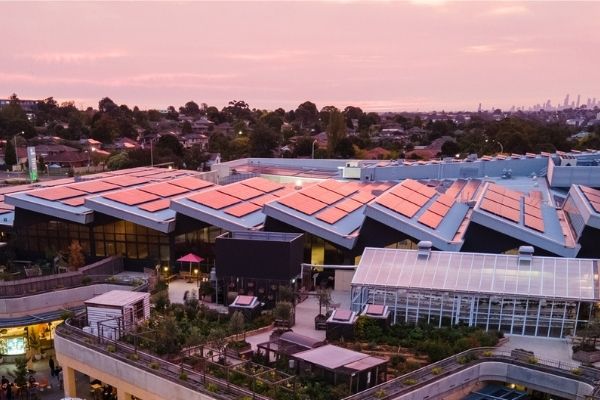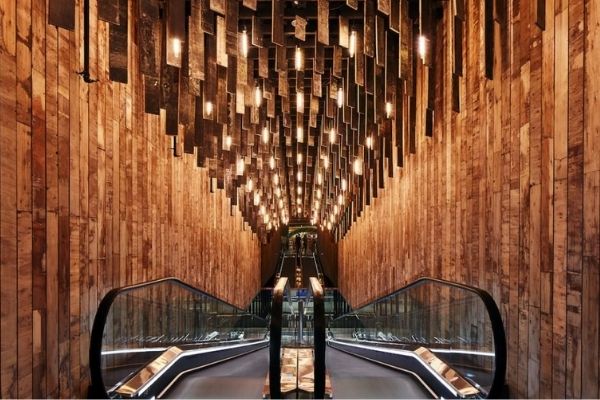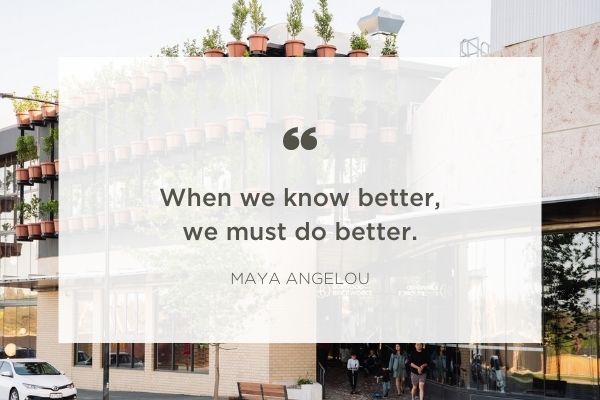
Michael Delaney, Director of ADP Consulting, shares some lessons learned from working on Burwood Brickworks by Frasers Property and the Living Building Challenge.
What role did you play at Burwood Brickworks?
ADP Consulting undertook the mechanical, electrical and fire design of the centre, and contributed to the Living Building Challenge (LBC) process, notably in relation to Materials.
How did working on a Living Building Challenge (LBC) project differ from other projects?
Greatly! Fundamentally, the project had a much bigger vision that drew in all project team members, including people within our office that were not directly working on it. It tapped into all of our senses of designing a legacy that was exciting and a privilege to be part of.
Did working to the LBC framework change your thinking or approach in any way?
It showed us that by setting a ‘Big Hairy Audacious Goal’ such as a Net Positive Shopping Centre, and that by achieving it, the bar had been lifted. We could now see that the concept could (and should) apply to the majority of projects that we work on, and that a noticeable ripple effect of improvements could be observed.

What were some of the biggest hurdles and how did you overcome them?
The requirement for extremely low energy consumption was a significant part of the design, as the HVAC traditionally accounts for 20-30% of a Shopping Centre’s usage. It required an iterative approach through modelling and design that required technical due diligence, and also open and clear communication and collaboration across the project team.
But the biggest challenge by far was engaging with and challenging suppliers to meet the requirements of The Red List. As engineers, we typically specify a ‘performance outcome’ of equipment, and contractors select the final product. Whereas the LBC required us to identify every product that fell within our disciplines – and cast a broad net to hundreds of companies to ascertain whether they could meet the stringent specification requirements. The process took time and application and was dependent on the willingness of the industry to come to the table. We were directed around the world to experts in different global offices, and heard countless tales of complexities in understanding and obtaining the information. From this process, however, we saw that the LBC is an effective tool for facilitating positive change – we saw multiple improvements in suppliers’ reporting frameworks because Red List criteria were now being asked of them.

What were some of your biggest learnings?
That the LBC is extremely effective in the three things it sets out to be:
A framework: It ‘technically’ sets the requirements of what Net Positive can achieve. This was useful for engaging engineers who like a structured approach.
An advocacy tool: The tool is a force for good, that can really bring about change within the industry, as demonstrated in our Materials selection experience.
A philosophy: A key component of the LBC is questioning ‘what does good look like?’. Burwood Brickworks has now set the bar of ‘what good looks like’ – it is a goal that the industry can benchmark itself against and aim towards.
Have you taken anything from your experience with the LBC and applied it to other work?
We learnt that the principles of regenerative design and that the philosophy of ‘What does good look like?’ can be applied to all of our projects. We acquired a broader appreciation of cultural, social and environmental best practice, which we now actively articulate this to clients that wish to view themselves as ‘sustainable’. We are working on a number of projects that are gearing up for accreditation through the ILFI, including Net Zero Energy, Net Zero Carbon, Core Certification and the LBC. Our experience with the LBC can be likened to the Maya Angelou quote – ‘when we know better, we must do better’. We are focused on doing the latter, starting with our daily design choices, through to being advocates for change within the industry.


